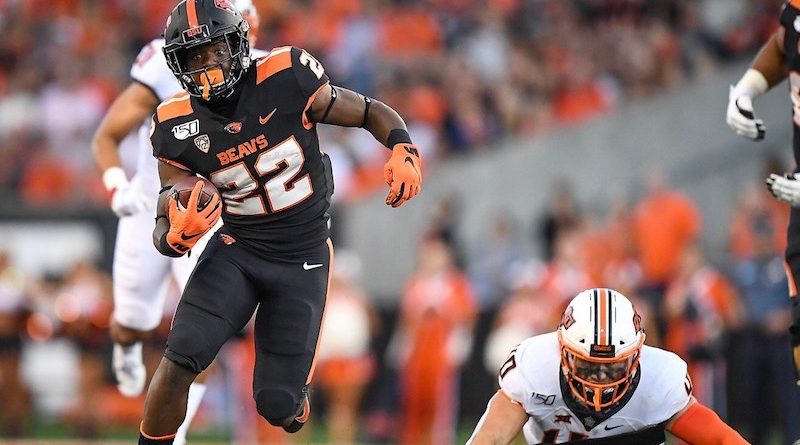This is the second in a series of stats and records analysis columns by our Stephen Vilardo, who covers a variety of Pac-12 statistical topics, from situational analysis and trend tracking to matchup breakdowns and player milestones.
Posted on November 6, 2020
|
Big Plays and Chunk Yards
Not surprisingly, Oregon has averaged 37.19 points per game since 1997, most in the Pac-10/12, and the second most in the nation behind Boise State’s 28.11.
 Since the league expanded in 2011 the Ducks have continued scoring and improving with the most explosive offense, averaging a conference best 41.3 points per game.
Since the league expanded in 2011 the Ducks have continued scoring and improving with the most explosive offense, averaging a conference best 41.3 points per game.
Oregon has also had the most explosive plays during that time. The Ducks have had 2,102 offensive plays covering at least 10 yards and 770 plays of 20+ yards. USC has the second most 20+ yard plays over that time with 623 since 2011.
 Going back to 1997 the Trojans have averaged 32.43 points per game, the 10th most nationally over that period. Arizona has had the third most plays of 20+ yards in the conference since 2011 with 622 for the Wildcats.
Going back to 1997 the Trojans have averaged 32.43 points per game, the 10th most nationally over that period. Arizona has had the third most plays of 20+ yards in the conference since 2011 with 622 for the Wildcats.
Arizona has had 178 plays of 40+ yards since the 2011 season and a total of 93 covering at least 50 yards, matching Oregon for the most spanning half the field.

Last season Anthony Gordon had the most passing yards ever in a single season in Pac-12 history with 5,579. That figure was the sixth most ever in FBS history for a single season and second most nationally last year to Joe Burrow’s 5,671.
 Burrow and LSU did of course play two more games than Gordon and the Cougars and the Washington State QB led in yards per game by a good margin 429.2-378.1.
Burrow and LSU did of course play two more games than Gordon and the Cougars and the Washington State QB led in yards per game by a good margin 429.2-378.1.
Interestingly, and not so surprisingly given the nature of Mike Leach’s attack, his 8.1 yards per attempt was tied for 27th nationally and third in the Conference.
When you break down Gordon’s numbers you see that he led the nation in pass plays of 10+ yards with 222—Burrow had 209 and no other player was above 170. He had 72 passing plays of 20+ yards which was second nationally but in line with the rest of the nation. Moving out to 30 and 40+ yard pass plays Gordon ranked ninth and 26th.
On the other end of things Jayden Daniels and Tyler Huntley each had five pass plays of 60+ yards ranking seventh in the nation with both those QBs being two of seven with at least 2 80-yard completions in 2019.

Last season there were seven runs in FBS that covered 90+ yards, two of them came from the Pac-12. Gary Brightwell of Arizona with a 94 yarder and Zack Moss who had a 91-yard run for the Utes.
Those were the first plays from scrimmage in the Pac-12 covering 90+ yards since Victor Bolden had a 92-yard run for Oregon State in 2016.
Also in 2016, Ryan Nall had an 89-yard run for the Beavers. Brightwell’s 94-yard run tied for the seventh-longest in conference history. The two longest runs ever were 98-yard runs by Bill Powell of Cal in 1951 and Mark Malone in 1979 for Arizona State.
Red Zone Touchdowns
Last season, Oregon State had a red zone touchdown rate of 84.62%. That figure led the nation in 2019, with Navy owning the second-best mark at 79.59%. Not only did the Beavers lead the nation, but the figure was the highest in Pac-12 since expansion in 2011.
 Moreover, Oregon State’s ability to score touchdowns in the Red Zone last season was the highest in the NCAA since Wisconsin posted a red zone touchdown rate of 85.33% in 2011.
Moreover, Oregon State’s ability to score touchdowns in the Red Zone last season was the highest in the NCAA since Wisconsin posted a red zone touchdown rate of 85.33% in 2011.
To find another Pac-12 program with a rate of 80% or better you’d have to go back to 2012 when Oregon posted an NCAA leading 80.82% red zone TD rate, and Washington’s mark of 80.77% in 2011, ranking second to the previously mentioned Badgers.
 For as good as the Beavers were at getting six in the red zone last season, Arizona State was almost as bad. The Sun Devils found the end zone on just 44.44% of their red zone trips, 126th out of 130 FBS teams last season, and the second worst rate of a Pac-12 team since 2011. Only Colorado in 2013 had a worse mark at 43.75%.
For as good as the Beavers were at getting six in the red zone last season, Arizona State was almost as bad. The Sun Devils found the end zone on just 44.44% of their red zone trips, 126th out of 130 FBS teams last season, and the second worst rate of a Pac-12 team since 2011. Only Colorado in 2013 had a worse mark at 43.75%.
Last season saw three of the four lowest marks recorded in the Pac-12 since 2011. In addition to Arizona State, Colorado had a red zone TD mark of 46.51%—122nd in the nation, and Stanford found pay dirt on just 47.06% of red zone trips, 119th in the nation.
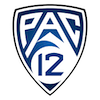 While Arizona State had trouble getting into the end zone, the Devils did manage to come away with points at a high rate. They scored on 91.11% of trips inside the opponents 20, second only to Oregon State’s 92.31% among Conference schools.
While Arizona State had trouble getting into the end zone, the Devils did manage to come away with points at a high rate. They scored on 91.11% of trips inside the opponents 20, second only to Oregon State’s 92.31% among Conference schools.
Oregon State’s rate was 11th in the nation while ASU was tied for 16th. Washington managed to get points on 90.74% of red zone opportunities a year ago for the 20th best mark in the nation. All three of those rates are among the Top 13 in the Pac-12 since expansion.
Historically speaking, Arizona State has been the Pac-12’s best at getting points inside the red zone. Since 2011, the Sun Devils have gotten points on 87.6% of trips inside the 20; that is tied with Stanford for the best mark in the conference.
Oregon has found the end zone on 70.9% of their trips inside the 20 since 2011, the best mark in the conference. Washington is second at 66.0% and Washington State has a 65.5% TD rate in the red zone since 2011.
Pac-12 Red Zone Scoring Rates since 2011
| Team | Attempts | Scored | Score Rate | TD | TD Rate | FG | FG Rate |
|---|---|---|---|---|---|---|---|
| ASU | 526 | 461 | 87.6% | 319 | 60.6% | 142 | 27% |
| Stanford | 469 | 411 | 87.6% | 289 | 61.6% | 122 | 26% |
| Washington | 497 | 426 | 85.7% | 328 | 66% | 98 | 19.7% |
| Oregon | 585 | 495 | 84.6% | 415 | 70.9% | 80 | 13.7% |
| WSU | 507 | 428 | 84.4% | 332 | 65.5% | 96 | 18.9% |
| Utah | 436 | 368 | 84.4% | 254 | 58.3% | 114 | 26.1% |
| UCLA | 473 | 396 | 83.7% | 298 | 63% | 98 | 20.7% |
| Cal | 511 | 431 | 84.3% | 334 | 65.4% | 97 | 19.0% |
| OSU | 414 | 346 | 83.6% | 262 | 63.3% | 85 | 20.5% |
| USC | 462 | 379 | 82.0% | 294 | 63.6% | 85 | 18.4% |
| Arizona | 480 | 393 | 81.9% | 298 | 62.1% | 95 | 19.8% |
| Colorado | 388 | 316 | 81.4% | 221 | 57.0% | 95 | 24.5% |
Passes Defended
The Pac-12 has had quite a bit of talent in the back end of the defenses recently. The talented players coupled with the increased amount of passing has led to some staggering statistics for Pac-12 defensive backs.
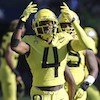
Thomas Graham Jr. of Oregon has opted out for his senior season but ended his three years in Eugene with 32 total passes defended, the fourth-most by a Pac-12 player since 2005, Oregon’s Arrion Springs had the most for a conference member with 42 for the Ducks from 2014-17.
Had Graham remained he surely would have ended with the second most of a Pac-12 player in the last 15 seasons. Cal’s Camryn Bynum has 26. The Conference lost other talent in addition to Graham. Stanford’s Paulson Abedo (27) has also opted out and Jace Whittaker, with his 34 career passes defended, has moved on to the NFL with the Cardinals.
![]() The Conference does still have talent at the position. Looking at national leaders, 16 active players have had at least 21 passes defended in their career. Two of those 16 play in the Pac-12, only the Big 12 and AAC have more, with three each.
The Conference does still have talent at the position. Looking at national leaders, 16 active players have had at least 21 passes defended in their career. Two of those 16 play in the Pac-12, only the Big 12 and AAC have more, with three each.
 Looking at the rest of the Power Five, SEC 2, ACC 2 (3 if you include Notre Dame) and Big Ten 2. Among the active leaders nationally from the Pac-12 are Lorenzo Burns of Arizona with 25 (7th nationally) and Deommodore Lenoir from Oregon with 21 (16th).
Looking at the rest of the Power Five, SEC 2, ACC 2 (3 if you include Notre Dame) and Big Ten 2. Among the active leaders nationally from the Pac-12 are Lorenzo Burns of Arizona with 25 (7th nationally) and Deommodore Lenoir from Oregon with 21 (16th).
Looking deeper at things over the last 15 seasons the 42 mentioned for Arrion Springs are the fifth-most of any player in the nation. Iman Marshall concluded his career at USC with 36 passes defended for the 21st most of any player in the nation since 2005. Whittaker’s 34 for Arizona ranks 33rd most for any player over that time period.
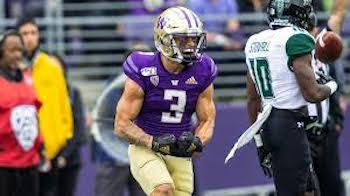
Elijah Molden enters his senior season with Washington among the leaders from a season ago. The Husky finished 2019 with 17 passes defended, tied for fifth most in the nation last year. Jack Jones tallied 16 a season ago for Arizona State ranking 10th in the nation.

Paulson Adebo only played 9 games last season for the Cardinal, but still managed to finish with 14 passes defended, and his average of 1.56 per game was the third most in the nation. Adebo added four interceptions last season with his average of 0.44 interceptions per game being the 7th most in the nation.
That rate of 0.44 was the 10th highest of any Pac-12 player since 2011, and the highest for a Cardinal since Brad Humphreys’ 0.55 interceptions per game in 1987.
Creating Loss of Yardage
Since 2011, Washington’s Hau’oli Kikaha is the Pac-12 leader in sacks with 36.0 and 51.5 TFL (Trent Murphy ended his Stanford career with 52.5 TFL, but 2.0 were in 2010, and Kikaha got all 51.5 from 2011-14). Tedy Bruschi owns the Conference’s career marks for both collecting 74.0 TFL for Arizona from 1991-95 with 55.0 of them sacks.
In 2000, Terrell Suggs recorded 24.0 sacks for Arizona State to set the single-season benchmark for the Conference. The best mark since 2011 belongs to Kikaha with 19.0 sacks in 2014, with six added stops behind the line for a total of 25.0 tackles for loss (TFL) that season.
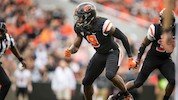
In that season, the Washington star averaged 1.36 sacks per game and 1.71 TFL per outing. Last season Hamilcar Rashed Jr. actually had better per game numbers with his 22.5 TFL for 1.88 per game, his 14.0 sacks were at a slightly lower rate of 1.17 per game.
The 1.88 TFL per game were the most in the nation, with Alex Highsmith of Charlotte second with 1.65. The last conference player to average more TFL over a season was Arizona State’s Will Sutton who had 1.96 per game in 2012. Joining Sutton at the top of the conference list that season was his teammate Carl Bradford with 1.65.
Owning the top two spots in the Conference is a feat the Sun Devils also accomplished in 2015, when Antonio Longino led the Conference with 1.73 TFL/game and Salamo Fiso was second with 1.54.
Oregon State, with Rashed Jr. leading the charge, led the Pac-12 with 7.17 TFL per game a season ago. In doing so, the Beavers became the sixth different team to lead the Pac-12 in that category since 2011.
The consistent team atop that stat? Utah. The Utes have led the league in every even year beginning with 2014. So, the Utes should lead the Pac-12 in TFL in 2020, right?
Looking Ahead to Home Openers
Arizona State has won their last 21 home openers. That is currently the longest active streak in the Pac-12, and tied for the 5th longest active streak in the nation.
Florida has won 31 home openers in a row with Wisconsin and Oklahoma State owning streaks of 25 games. Illinois currently owns 22 game win streak in their first home game. They hosted Purdue on 10/31 to kick off their home season, losing 31-24.
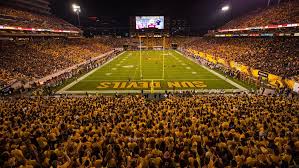
Provided the game isn’t canceled, the Sun Devils will host Cal November 14 for their home opener. Below is a look at the current streak for each Pac-12 team.
| Team | Home Opener Streak |
|---|---|
| ASU | +21 |
| Oregon | +15 |
| Utah | +13 |
| Stanford | +12 |
| Washington | +10 |
| Cal | +6 |
| USC | +6 |
| Colorado | +5 |
| WSU | +3 |
| Arizona | +1 |
| OSU | -1 |
| UCLA | -2 |
Oregon’s streak is tied for the 15th longest in the country, and Utah’s is the 23rd best. Oregon hosts Stanford in its opener in the Conference’s Week 1, but Utah’s home contest with Arizona has been canceled.
Follow Stephen on Twitter @StephenVilardo and his organization @SERCenter, and visit his website at https://www.sercstats.com/.
—More from Stephen Vilardo—
- Stephen Vilardo’s SuperWest NFL Draft History Capsules
- Stephen Vilardo’s San Diego State-UConn Sweet 16 Preview
- Stephen Vilardo’s MW Second-Round Big Dance Previews
- Steve Vilardo’s MW Friday 1st-Round Big Dance Previews
- Stephen Vilardo’s Mountain West NCAA First Four Preview
- Stephen Vilardo’s 2024 Mtn West Tournament Title Preview
- Vilardo: Final 2024 MW Hoops Power Rankings & Outlook
- Stephen Vilardo’s ’23-24 WK 10 MW Hoops Power Rankings
- Stephen Vilardo’s 2023-24 WK 9 MW Hoops Power Rankings
- Stephen Vilardo’s 2023-24 WK 8 MW Hoops Power Rankings
- Stephen Vilardo’s 2023-24 WK 7 MW Hoops Power Rankings
- Stephen Vilardo’s 2024 NFL Super Bowl LVIII Preview
- Stephen Vilardo’s 2023-24 WK 6 MW Hoops Power Rankings
- Stephen Vilardo’s 2023-24 WK 5 MW Hoops Power Rankings
- Stephen Vilardo’s NFL Conference Championship Previews
-
Stephen Vilardo’s SuperWest NFL Draft History Capsules
A brief summary of each football program's player selection history at a glance - April 24, 2024 -
Stephen Vilardo’s San Diego State-UConn Sweet 16 Preview
Will the Aztecs be able to match the results from last season’s run against the Huskies? - March 28, 2024 -
Stephen Vilardo’s MW Second-Round Big Dance Previews
Three different teams won an NCAA Tournament game for the first time in conference history - March 24, 2024

